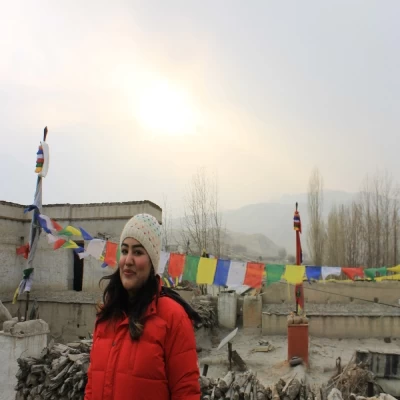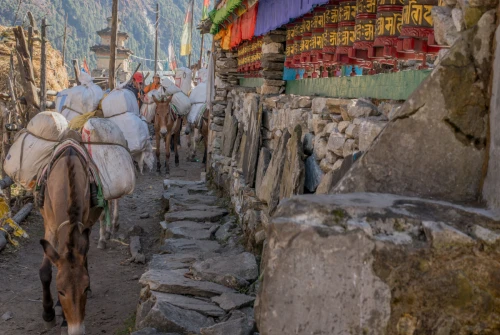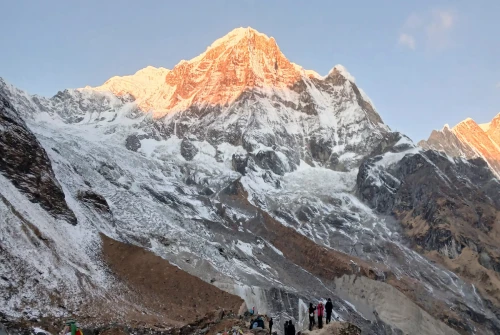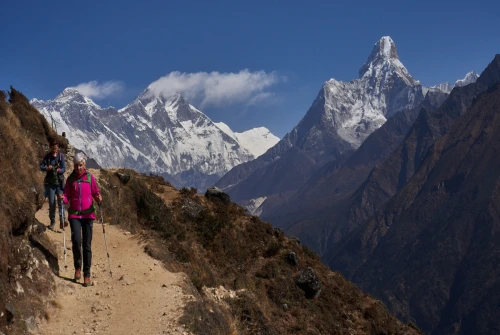What is Khumai Danda?
Khumai Danda is one of Nepal’s hidden trekking gems, nestled in the lap of the Annapurna region. Located at an altitude of around 3,245 meters, it offers jaw-dropping views of Machhapuchhre (Fishtail) and the Annapurna massif. It’s less crowded than popular treks like Poon Hill or Annapurna Base Camp, making it a peaceful and authentic experience for nature lovers.
Why Choose Khumai Danda for Trekking?
If you're someone who loves serene trails, untouched forests, and panoramic Himalayan views without the touristy hustle, Khumai Danda is your go-to. It’s perfect for beginners and intermediate trekkers alike, and since the route isn’t overly commercialized yet, you get to enjoy pure Himalayan bliss.
Best Time to Visit
The best time to trek Khumai Danda is during spring (March–May) and autumn (September–November). These months offer clear skies, stable weather, and vibrant rhododendron blooms during spring. Monsoon (June–August) brings heavy rain and slippery trails, while winter (December–February) can get quite cold and snowy.
Physical Preparation
Start Training Early
You don’t need to be an athlete, but you do need stamina. Start training at least 4–6 weeks before the trek.
Focus on Cardio and Leg Strength
Activities like jogging, swimming, cycling, or hiking will build your endurance. Don’t skip leg workouts—think squats, lunges, and step-ups.
Hiking with a Backpack
Try walking with a 5–7 kg backpack to simulate actual trekking conditions. This will help your shoulders and back get used to the load.
Stair Climbing and Long Walks
Train by walking on trails or even stairs. Aim for 8–12 km of walking at least three times a week.
Mental Preparation
Building the Right Mindset
Trekking is as much mental as it is physical. Stay positive, patient, and keep reminding yourself why you're doing this. The journey is as beautiful as the destination.
Coping with Altitude and Fatigue
Altitude can mess with your energy levels. Learn to listen to your body. Take breaks, breathe deeply, and don’t rush.
Essential Gear and Packing List
Clothing Essentials
Pack light, but smart.
Layering for Different Weather
Base Layer: Moisture-wicking t-shirts
Mid Layer: Fleece or lightweight down jacket
Outer Layer: Waterproof jacket and pants
Gloves, beanie, sunhat, and buffs are must-haves.
Footwear for Trekking
Invest in sturdy, ankle-support hiking boots. Break them in before the trek to avoid blisters. Also, pack extra socks.
Backpack Essentials
Carry a 30–40L backpack with:
Water bottles or hydration bladder
Sunscreen and lip balm
Sunglasses
Power bank
Personal ID and cash
Sleeping Gear and Tent Tips
Although some lodges are available, carrying a sleeping bag is wise—especially during off-season. If you’re camping, take a lightweight tent and mat.
Health and Safety Tips
Hydration and Nutrition
Drink 3–4 liters of water daily. Carry oral rehydration salts. Eat energy-rich food—think nuts, dried fruits, and chocolate bars.
First Aid Kit Must-Haves
Include:
Band-aids
Blister pads
Painkillers
Diamox for altitude sickness
Antiseptic cream
Any personal medications
AMS (Acute Mountain Sickness) Awareness
Watch for headaches, nausea, and dizziness. Don’t ascend too quickly, and descend if symptoms worsen.
Documentation and Permits
Necessary Permits
Khumai Danda doesn’t currently require restricted area permits, but you may still need:
TIMS (Trekkers' Information Management System) card
Annapurna Conservation Area Permit (ACAP).
Insurance and Emergency Contact Info
Buy travel insurance that covers high-altitude trekking and helicopter evacuation. Share your itinerary with a family member or friend.
Local Culture and Etiquette
Respecting Local Traditions
Nepali culture is warm and spiritual. Always ask before taking photos of locals, remove shoes when entering homes or temples, and dress modestly.
Language Tips and Local Greetings
Learn simple words like:
Namaste – Hello
Dhanyabaad – Thank you
Pani cha? – Do you have water?
Guided Trek vs. Solo Trek
Pros and Cons of Each
Guided Trek Pros: Local knowledge, safer, easier planning.
Solo Trek Pros: More freedom and lower cost, but requires confidence and self-reliance.
Choosing the Right Guide or Agency
Look for registered, experienced local guides. Agencies like All Nepal Hiking (ANH) offer expert guidance and safety assurance.
Transportation and Access
How to Reach Khumai Danda
Start from Pokhara, take a local jeep or taxi to Hemja or Ghachowk, and then trek to Hile Kharka and onwards to Khumai Danda.
Local Transport Options
Public buses, shared jeeps, or pre-booked private vehicles are all options. Choose based on comfort and budget.
Supporting Eco-Friendly Lodges
Stay in places that practice sustainability—solar energy use, waste management, and local sourcing.
Conclusion
Khumai Danda trekking is like discovering a secret chapter of the Himalayas—untouched, serene, and deeply rewarding. With a bit of planning, the right gear, and a whole lot of enthusiasm, you’ll be all set for one of the most soul-refreshing adventures Nepal has to offer. Happy trekking!




